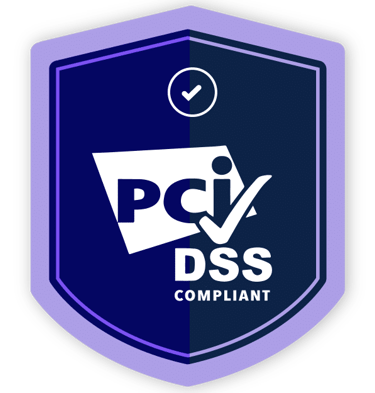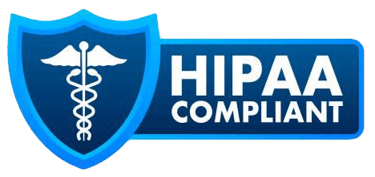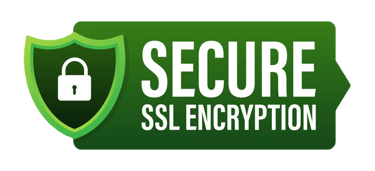How to Prepare for a California Department of Public Health (CDPH) Survey
Learn how to prepare your California home health agency for a CDPH survey with this comprehensive guide covering Medicare CoPs, clinical documentation, QAPI, infection control, emergency preparedness, staff readiness, and essential regulatory links to ensure full compliance.
11/26/20254 min read
Preparing for a California Department of Public Health (CDPH) survey is one of the most important responsibilities for any Medicare-certified Home Health Agency (HHA). CDPH surveys verify compliance with both state licensing requirements and federal Medicare Conditions of Participation (CoPs), found on the Electronic Code of Federal Regulations website (https://www.ecfr.gov/current/title-42/chapter-IV/subchapter-G/part-484). A strong survey outcome ensures operational stability, reimbursement protection, and an excellent reputation within the community.
This in-depth guide explains how to prepare for a CDPH survey, what surveyors focus on, and how to maintain continuous readiness.
1. Understanding the Purpose of a CDPH Survey
1.1. Ensuring Compliance With Federal Medicare CoPs
CDPH enforces CMS’s Home Health CoPs, which outline federal standards for patient rights, assessments, care planning, QAPI, infection control, emergency preparedness, skilled services, and documentation. These regulations can be reviewed in full at the ECFR website (https://www.ecfr.gov/current/title-42/chapter-IV/subchapter-G/part-484).
CMS’s official survey guidance and interpretive requirements are located in the CMS State Operations Manual Appendix B (https://www.cms.gov/Regulations-and-Guidance/Guidance/Manuals/downloads/som107ap_b_hha.pdf).
1.2. Verifying Compliance With California Licensing Requirements
California home health agencies must also comply with state-specific statutes under the California Health & Safety Code, available at https://leginfo.legislature.ca.gov/, and Title 22 California Code of Regulations (https://www.cdph.ca.gov/Programs/CHCQ/LCP/Pages/Laws.aspx).
1.3. Protecting Patients and Ensuring Quality of Care
Surveyors assess whether the agency protects patient rights, delivers safe care, documents accurately, and maintains a functioning Quality Assessment and Performance Improvement (QAPI) program (https://www.cms.gov/Medicare/Provider-Enrollment-and-Certification/QAPI).
2. Types of CDPH Surveys
Initial Medicare Certification Survey
Performed when an agency first seeks Medicare approval.
Recertification Survey
Occurs approximately every 36 months to verify continued compliance.
Complaint or Focused Survey
Triggered by consumer complaints, adverse events, or quality concerns.
Validation Survey
Conducted after an accrediting body’s survey (TJC, CHAP, ACHC) to confirm accuracy of findings.
3. What CDPH Surveyors Review During a Survey
Surveyors review:
Organizational structure
Policies and procedures
Personnel files
Clinical records of current and discharged patients
QAPI data and program activity
Infection control practices
Emergency preparedness plan and drills
Home health aide supervision and competency
OASIS data and assessment integrity (resources available at https://www.cms.gov/Medicare/Quality-Initiatives-Patient-Assessment-Instruments/HomeHealthQualityInits/OASIS-Library)
Surveyor protocol follows CMS standards outlined in Appendix B.
4. Key CoP Areas Surveyors Focus On
4.1. Patient Rights (42 CFR §484.50)
Surveyors check:
Signed notification of patient rights
HIPAA compliance documentation
Freedom from abuse, neglect, and exploitation
Complaint process documentation
California requires additional patient rights standards found in Title 22 at https://www.cdph.ca.gov/Programs/CHCQ/LCP/Pages/Laws.aspx.
4.2. Comprehensive Assessment (42 CFR §484.55)
Surveyors verify:
Timely Start of Care (SOC) assessments
Accurate OASIS data entry (https://www.cms.gov/Medicare/Quality-Initiatives-Patient-Assessment-Instruments/HomeHealthQualityInits/OASIS-Library)
Reassessments within required timeframes
Clinical appropriateness
Incorrect or late assessments are among the most common CoP-level deficiencies.
4.3. Care Planning, Coordination, and Orders (42 CFR §484.60)
Surveyors evaluate:
Individualized, measurable care plans
Up-to-date physician orders with timely MD signatures
Medication reconciliation accuracy
Interdisciplinary communication
Plan of care requirements can be referenced at the ECFR site:
https://www.ecfr.gov/current/title-42/chapter-IV/subchapter-G/part-484
4.4. Skilled Professional Services (42 CFR §484.75)
Surveyors review:
RN, PT, OT, ST documentation
Skilled need justification
Interventions and measurable goals
Consistency with the plan of care
Documentation must reflect clinical reasoning—not copy/paste templates.
4.5. Home Health Aide Services (42 CFR §484.80)
Surveyors inspect:
HHA training and competency files
14-day supervisory visits (RN/therapist)
HHA care plan and task sheets
Skills checklists
California training requirements can be found at CDPH’s HHA page (https://www.cdph.ca.gov/Programs/CHCQ/LCP/Pages/HomeHealthAide.aspx).
4.6. Infection Prevention and Control (42 CFR §484.70)
Surveyors expect:
A fully implemented infection control program
Ongoing surveillance tracking
Employee TB screening
Exposure control plan
CDC’s home care infection control guidelines are available at https://www.cdc.gov/infectioncontrol/index.html.
4.7. QAPI Program (42 CFR §484.65)
Surveyors review:
Quarterly and annual QAPI reports
Measurable performance improvement projects
Data tracking (hospitalizations, infections, falls, patient satisfaction)
Governing Body oversight
CMS QAPI resources are available at https://www.cms.gov/Medicare/Provider-Enrollment-and-Certification/QAPI.
4.8. Emergency Preparedness (Emergency Preparedness Final Rule)
Surveyors check:
All-hazards emergency plan
Communication plan
Annual training
Full-scale and table-top exercises
CMS EP requirements can be found at:
https://www.cms.gov/Medicare/Provider-Enrollment-and-Certification/SurveyCertEmergPrep/Emergency-Prep-Rule.
4.9. Personnel File Compliance
Surveyors review:
Licensure verification
OIG exclusion checks (https://exclusions.oig.hhs.gov/)
TB/Health screenings
CPR certifications
Orientation and annual competencies
Job descriptions
Background clearance (California)
Personnel file gaps are among the most cited deficiencies in California.
5. Step-by-Step Guide to Preparing for a CDPH Survey
5.1. Maintain Year-Round Survey Readiness
CDPH surveys are unannounced. Maintaining continuous readiness is essential.
Strategies include:
Monthly clinical chart audits
Quarterly personnel file reviews
OASIS accuracy validation using CMS tools
Regular care plan audits to match visit frequencies
5.2. Conduct Mock Surveys
Mock surveys should follow CMS Appendix B protocol (https://www.cms.gov/Regulations-and-Guidance/Guidance/Manuals/downloads/som107ap_b_hha.pdf) and include:
Entrance conference practice
Clinical record audits
Staff interviews
Home visit simulations
Mock surveys are one of the strongest predictors of real survey performance.
5.3. Staff Education and Preparedness
Surveyors interview RNs, LVNs, PTs, OTs, STs, HHAs, administrators, and clinical supervisors.
Staff should confidently answer questions about:
Patient rights
Infection control protocols
Reporting abuse and neglect
Emergency preparedness
Skilled need and documentation standards
Training resources can include CDC guidelines (https://www.cdc.gov/infectioncontrol/index.html).
5.4. Clean Up Clinical Documentation
Before survey:
Verify physician orders are signed and dated
Reconcile medication lists
Ensure visit notes show skilled reasoning
Remove conflicting documentation
Ensure goals are measurable and updated
Documentation must align with CMS charting expectations at:
https://www.cms.gov/Medicare/Quality-Initiatives-Patient-Assessment-Instruments/HomeHealthQualityInits
5.5. Strengthen Infection Control & QAPI Programs
Ensure:
Monthly surveillance logs are complete
Performance improvement projects are documented
Meeting minutes show Governing Body involvement
Action plans include measurable outcomes
Review CMS QAPI guidelines at:
https://www.cms.gov/Medicare/Provider-Enrollment-and-Certification/QAPI.
5.6. Update Personnel Files
Every employee file must contain:
Current licenses
Skills checklists
Orientation
Health screenings
Background check clearance
OIG exclusion check results (https://exclusions.oig.hhs.gov/)
5.7. Review Emergency Preparedness Compliance
Conduct:
Annual full-scale exercise
Annual tabletop exercise
Communication plan updates
Patient emergency notifications
CMS EP rule details found at:
https://www.cms.gov/Medicare/Provider-Enrollment-and-Certification/SurveyCertEmergPrep/Emergency-Prep-Rule.
6. What Happens During a CDPH Survey
Entrance Conference
Surveyors review agency structure and request documents.
Record and Personnel Review
Surveyors select clinical and personnel files for review.
Home Visits
Surveyors accompany clinicians on patient visits when patients consent.
Staff Interviews
Surveyors validate competency and knowledge.
Exit Conference
Surveyors provide preliminary findings and discuss potential deficiencies.
7. If Deficiencies Are Identified
The agency must submit a Plan of Correction (PoC) specifying:
The corrective action
How compliance will be sustained
Who is responsible
The completion date
CMS PoC guidance:
https://www.cms.gov/Regulations-and-Guidance/Guidance/Manuals/downloads/som107ap_b_hha.pdf
Final Thoughts
Preparing for a CDPH survey requires strong processes, accurate documentation, staff competency, and continuous readiness. The regulatory links included in this guide provide authoritative resources to strengthen your operations and ensure compliance.
For expert support with CDPH survey readiness, mock surveys, QAPI development, documentation audits, policy creation, and operational guidance, HealthBridge offers comprehensive consulting and management solutions tailored to California home health agencies.

Some or all of the services described herein may not be permissible for HealthBridge US clients and their affiliates or related entities.
The information provided is general in nature and is not intended to address the specific circumstances of any individual or entity. While we strive to offer accurate and timely information, we cannot guarantee that such information remains accurate after it is received or that it will continue to be accurate over time. Anyone seeking to act on such information should first seek professional advice tailored to their specific situation. HealthBridge US does not offer legal services.
HealthBridge US is not affiliated with any department of public health agencies in any state, nor with the Centers for Medicare & Medicaid Services (CMS). We offer healthcare consulting services exclusively and are an independent consulting firm not affiliated with any regulatory organizations, including but not limited to the Accrediting Organizations, the Centers for Medicare & Medicaid Services (CMS), and state departments. HealthBridge is an anti-fraud company in full compliance with all applicable federal and state regulations for CMS, as well as other relevant business and healthcare laws.
© 2025 HealthBridge US, a California corporation. All rights reserved.
For more information about the structure of HealthBridge, visit www.myhbconsulting.com/governance
Legal
Resources
Based in Los Angeles, California, operating in all 50 states.






